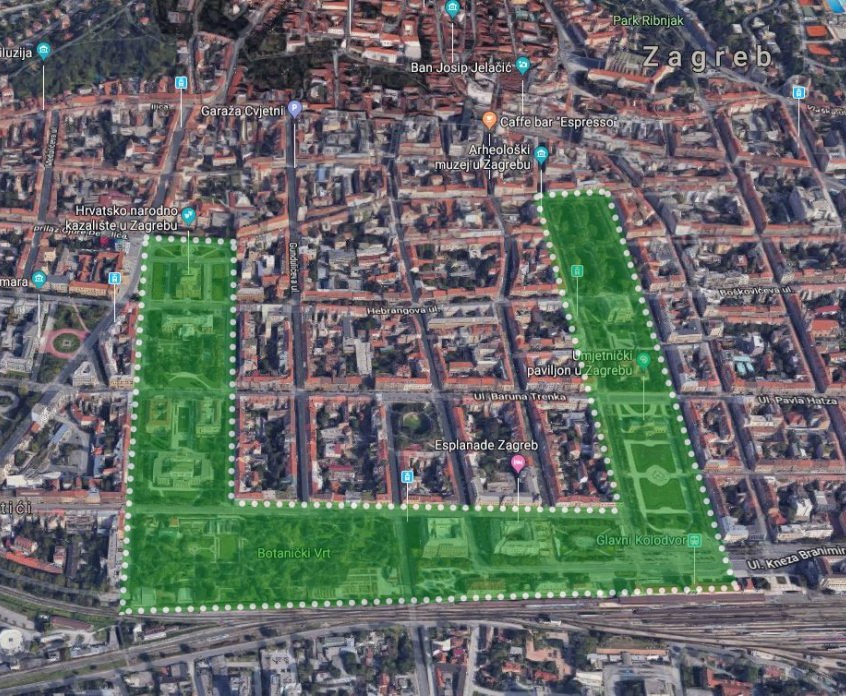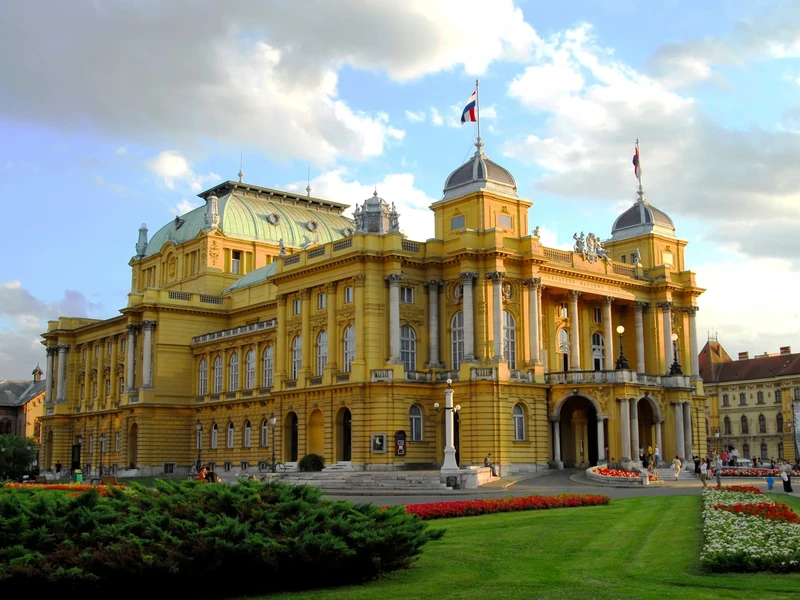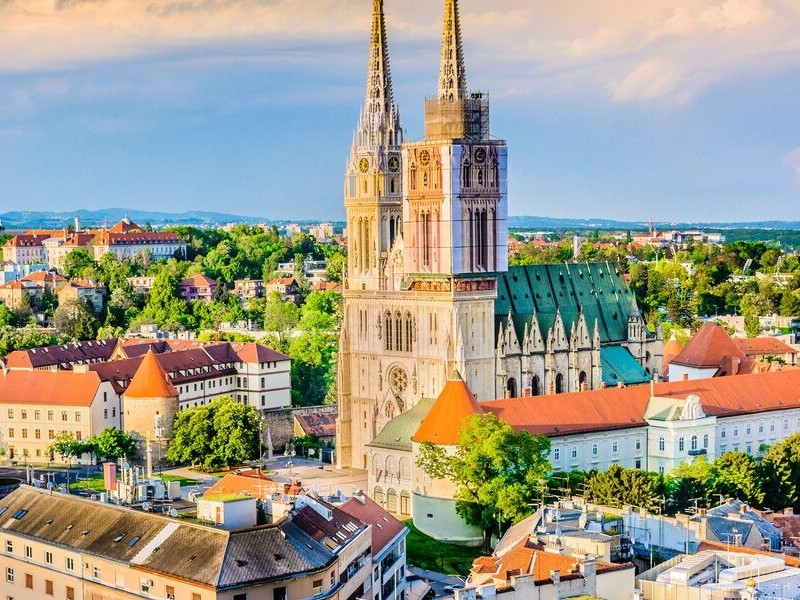Zagreb
Zagreb is the capital of the Republic of Croatia and the largest city in Croatia by population.
The wider area of the city gathers more than one million inhabitants.
Zagreb is a safe metropolis with open doors, turbulent history and interesting personalities,
which cordially invites you to get to know each other and fulfills expectations. In this city, interesting
acquaintances, new friendships and unforgettable experiences are easily made. Historical sequences can be
read like a picture book on the preserved facades, and the streets and squares exude the coexistence of
different mentalities that create a recognizable Zagreb identity of a relaxed metropolis.
Croatian National Theatre
Croatian National Theater in Zagreb On October 14, 1895, a theater building for about 750 spectators was
inaugurated in Zagreb, where the Croatian National Theater operates today. The neo-baroque HNK building is
a masterpiece of late historicism by Austrian architect Ferdinand Fellner and German architect Hermann Helmer.
Cathedral of Zagreb
The Cathedral of the Assumption of the Blessed Virgin Mary and Saints Stephen and Ladislav, or Zagreb
Cathedral, is the largest Croatian sacred building and one of the most valuable monuments of Croatian
cultural heritage. It is the first and most significant Gothic building in Croatia.
The Zagreb diocese was founded by King Ladislav in 1094 and subordinated to the archdiocese of Ostrogon.
In the same year, according to Croatian tradition, the cathedral was also founded.
Saint Mark's Square
Saint Mark's Square, the central square of Zagreb's Upper Town, once known as Radić Square. Apart from
the church of St. Mark, on St. Mark's Square is the headquarters of the highest state institutions:
the Croatian Parliament, the Government of the Republic of Croatia and the Constitutional Court.
Church of St. The brand was built in the 14th century. The church is a protected cultural asset.

Lenuzzi's Horseshoe
The Green Horseshoe or Lenuzzi's Horseshoe is the name for an urban complex consisting of a series of
squares-parks in Donji Grad in Zagreb.
The second half of the 19th century brought great urban momentum to the development of the modern city
of Zagreb from a provincial place at the beginning of the century. The development of social and cultural
awareness of the city as a representative and urban center, a representative of citizens and peoples,
determined Zagreb's path in this direction. The city of Zagreb, which until then was part of the periphery,
could finally be compared with the other centers of the Monarchy - Vienna and Budapest. The most important
urban project of the 19th century in Zagreb was the construction of a new part of the city, the Lower Town.
During the 19th and early 20th centuries, a representative framework for the new city center - the
so-called Lenuzzi's or Green Horseshoe as an example of a monumental urban plan that will give Zagreb the
attribute of a modern city, and thus lay the foundations for its further development.
Zagreb funicular
The Zagreb Funicular is a public means of transport that connects Zagreb's Upper and Lower Towns.
The lower station is located in Tomićeva street, and the upper station is located on Strossmayer's
promenade, at the foot of the Lotrščak tower.
With a track length of 66 meters, it is known as one of the shortest cable railways in the world
intended for public traffic. It was officially commissioned on October 8, 1890, and began operating
on April 23, 1893.





